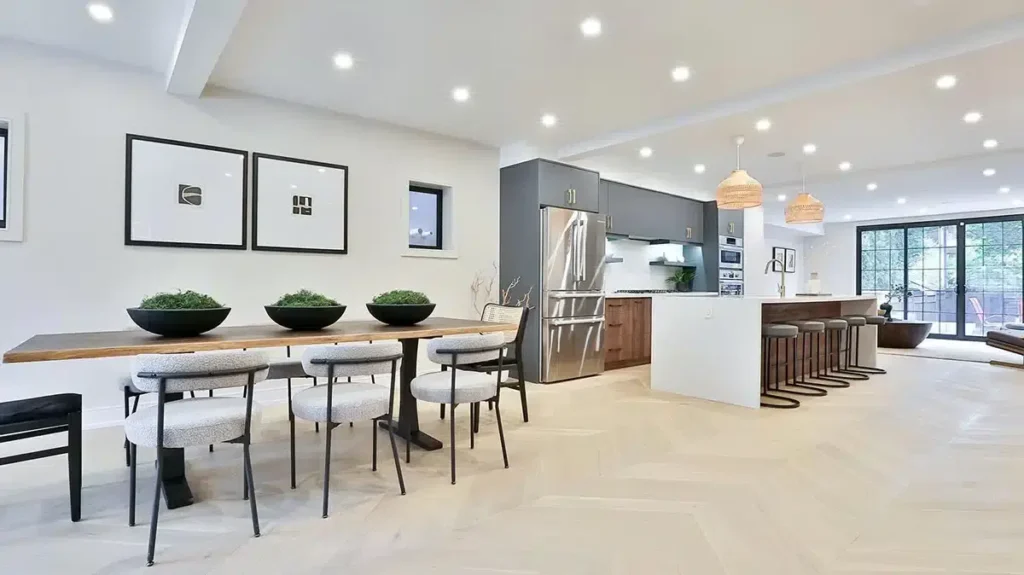In the ever-evolving landscape of healthcare, the role of lighting is undergoing a profound transformation. With advancements in technology, shifting patient expectations, and a growing emphasis on sustainability, the design of healthcare lighting solutions is evolving to meet the changing needs of patients, staff, and the healthcare environment. In this blog, we’ll explore the emerging trends and innovations shaping the future of healthcare lighting design and their potential impact on patient care and well-being.
Human-Centric Lighting:
One of the most significant trends in healthcare lighting design is the adoption of human-centric lighting (HCL) principles. HCL focuses on aligning lighting design with the natural rhythms of the human body to promote well-being and enhance productivity. By incorporating dynamic lighting solutions that mimic the natural progression of daylight, healthcare facilities can support circadian rhythm regulation, improve sleep quality, and enhance mood and cognitive function among patients and staff.
Adaptive Lighting Systems:
Adaptive lighting systems are revolutionizing the way healthcare environments are illuminated, offering dynamic control over lighting levels and color temperatures to accommodate diverse patient needs and preferences. These systems use sensors and smart controls to adjust lighting settings based on factors such as occupancy, activity levels, and time of day, creating personalized lighting environments that optimize comfort and productivity.
Integration of Biophilic Design Elements:
Biophilic design principles, which emphasize the connection between humans and nature, are increasingly being incorporated into healthcare lighting design. By integrating natural elements such as daylight, views of nature, and biophilic patterns into lighting installations, healthcare facilities can create environments that promote healing, reduce stress, and enhance overall well-being. Biophilic lighting designs can improve patient outcomes, increase staff satisfaction, and create more inviting and calming spaces for all occupants.
Advanced Lighting Controls and Automation:
The integration of advanced lighting controls and automation systems is enabling healthcare facilities to optimize energy efficiency, enhance flexibility, and improve operational efficiency. These systems use sensors, timers, and programmable presets to adjust lighting levels and schedules based on occupancy, daylight availability, and user preferences. By implementing lighting controls and automation, healthcare facilities can reduce energy consumption, minimize operational costs, and create environments that support patient-centered care.
Sustainable Lighting Practices:
Sustainability is becoming a central focus in healthcare lighting design, with a growing emphasis on energy efficiency, resource conservation, and environmental responsibility. LED lighting technologies, which offer significant energy savings and longer lifespans compared to traditional lighting sources, are increasingly being adopted in healthcare facilities. Additionally, strategies such as daylight harvesting, occupancy sensors, and lighting retrofits are being implemented to further enhance energy efficiency and reduce environmental impact.
Personalized Lighting Solutions:
As healthcare becomes increasingly patient-centered, there is a growing demand for personalized lighting solutions that cater to individual preferences and needs. Adjustable lighting fixtures, tunable white light systems, and personalized lighting controls allow patients to customize their lighting environments to suit their comfort and preferences. These personalized lighting solutions can improve patient satisfaction, enhance the overall healthcare experience, and promote a sense of control and empowerment among patients.
In conclusion, the future of healthcare lighting design is characterized by innovation, sustainability, and a focus on human well-being. By embracing emerging trends such as human-centric lighting, adaptive lighting systems, biophilic design, advanced lighting controls, and personalized lighting solutions, healthcare facilities can create environments that support healing, enhance patient comfort, and improve overall care outcomes. Through collaboration, research, and a commitment to continuous improvement, healthcare lighting designers can shape a brighter, healthier future for patients, staff, and communities alike.


